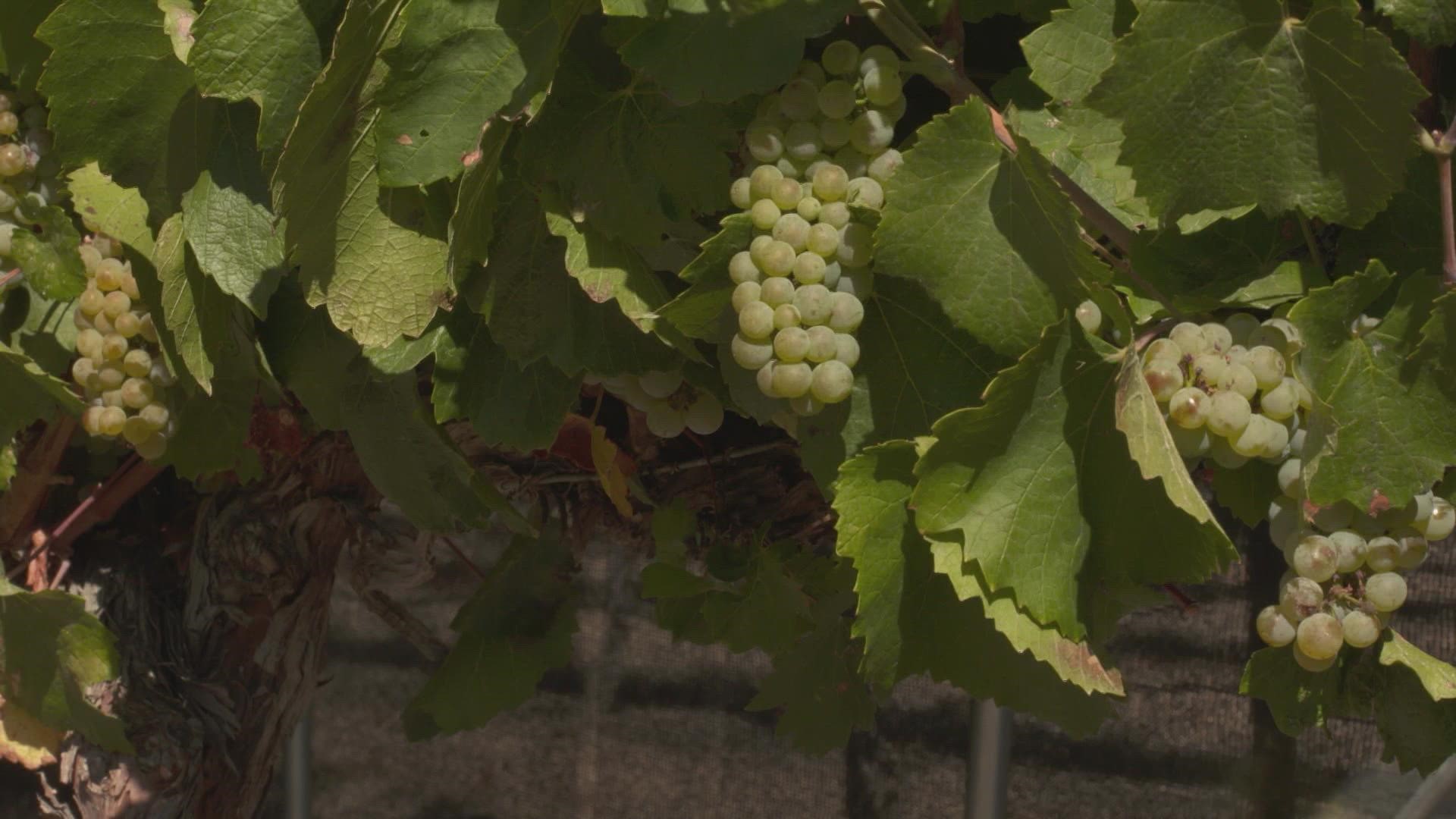PROSSER, Wash. — As waves of wildfire smoke travel over vineyards, compounds can impact the grapes and vines. In some cases, wildfire smoke can turn the taste of wine into one of ash.
Washington State University researchers are working to understand exactly how that process works and what can be done to limit or prevent it.
Tom Collins, an Assistant Professor at WSU specializing in grape and wine chemistry research, came to academia after a career in the business of winemaking. He learned firsthand the impact wildfire smoke could have on grapes and worked on research in the business world. Now, he's collaborating with teams at WSU and in Oregon and California.
"We're seeing losses of fruit, losses in wine, related to smoke exposure events," Collins said. "Not widespread every year but there'll be enough instances that it's worth studying to try to reduce the amount of losses to these smoke events."
Collins' team pumps smoke into a hoop house around the clock, taking samples of grapes at several intervals and freezing them for a team in Pullman that will do RNA work to understand which genes are turned on when there's a smoke exposure, which is being down-regulated, and how the vine is responding. In essence, it's measuring what defense mechanisms the vine is using.
"Most of its direct exposure and we're still working out exactly the mechanism for transfer from the outside to the inside, but we do know fairly quickly after the smoke hits the vine, the compounds that are associated with smoke end up inside the skin," Collins said. "So they're in the skin cells, and at that point, you can't wash it off- it's inside the berry."
Collins said they are doing a grape-to-glass study trying to understand how the vine responds when you have smoke exposure. The study also hopes to measure whether there are materials that, if sprayed on before the exposure, can change the amount of smoke that impacts the grapes.
"We've shown that the materials we're trying could result in about a 50% reduction in the number of smoke compounds that end up in the fruit," Collins said. "That's what we've seen from the trials and some of the other compounds do so similarly. The concept is, if we can reduce the amount that's getting to the fruit in the first place, it reduces the likelihood that we're gonna have a problem, and if there is a problem, it makes it easier to address because we're working on a lower concentration of these compounds than if we hadn't done something on the vineyard."
Collins said they have been doing this work at WSU since about 2016. In the first couple of years, the team focused on building the system. The USDA and state wine commissions have put money toward the project, hoping to solve the growing issue with a sour bottom line. They're also building sensing networks and placing smoke sensors with particle counters in participating commercial vineyard areas.
"One of the things we've seen over the past decade or so is an increased number of instances where wildfire smoke ends up in vineyards," Collins said. "We have definitely seen - not just in Washington but in California, Oregon, British Columbia - every year, somewhere up and down the West Coast, there are vineyards that are affected by smoke.
Collins said the smoke-affected vines result in winemakers just can't sell. With larger, more severe wildfires likely to produce more smoke, they hope to help address the problem impacting a large part of the Pacific Northwest economy.

